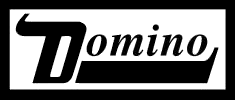The music industry consists of four major record companies; Universal, Sony Music, Warner Brothers and EMI. Most of these major record labels own a number of smaller, more independent record labels such as Columbia, Island, Syco, RCA, and Virgin. These companies are known as major-independents'.
The idea behind larger, more successful record companies is to build up a status online and allow them to make profit through advertising. An example of strategy that does this is Vevo which a music website that is owned and operated by Universal Music Group, Google, Sony Music Entertainment, and Abu Dhabi Media. There are also a huge number of smaller record labels which focus mainly on niche artists and are called 'independents'. An example of a successful independent record label is 'Domino Records'. Often record labels begin as independents and are bought by major companies, which then turns them into 'major-independents'.
Artists can also be divided into two different categories; Organic and Synthetic. The term organic means that the music comes first and is usually written by the artists themselves. They write the music that they enjoy and that they want to make. The record labels, if signed, then have to try and sell this type of music to the correct market segment. This genre of music generally appeals to niche audiences, but can also appeal to a more larger audience. A famous example of an organic band is The Beatles. Before starting their careers the band had known each other and all shared the same love for music. They then created the band based on the different members abilities.
The second type of artist is Synthetic. The term Synthetic refers to the idea that the artist(s) are almost manufactured and it is the record labels who have to do most of the work. A good example of this is shows such as The X Factor and The Voice. A gap in the industry/market is established and then exploited by the development of music and often the artist to fill this gap. Unlike Organic music, Synthetic music's goal is money rather than identification. Acts such as One Direction and The Spice Girls are manufactured to suit the audience and market gap.
